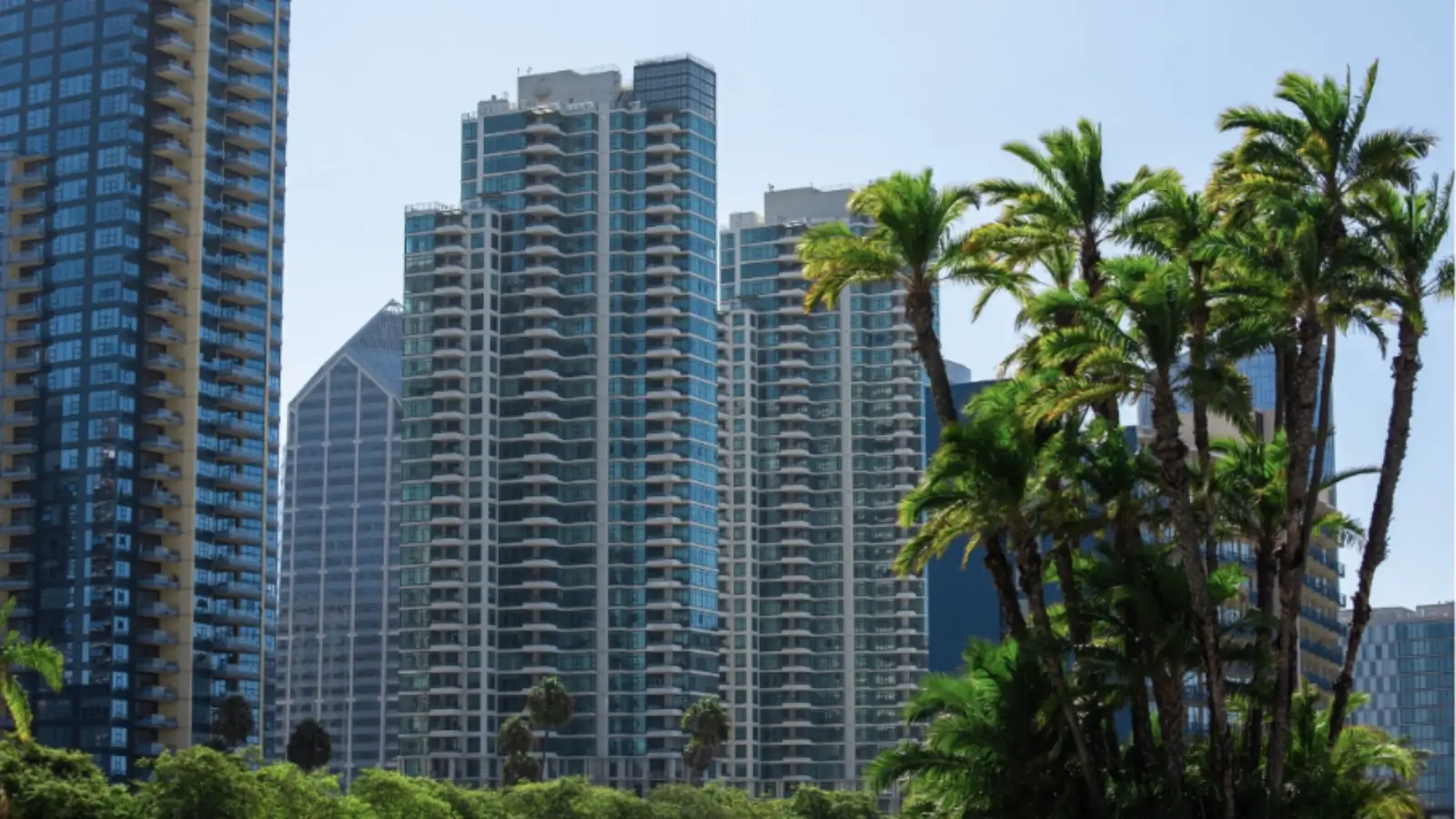Real estate development success now relies more and more on differentiation strategies that not only provide instantaneous visual effect, but also render long-term functional value. One of the most effective solutions that are picking up steam across residential and commercial markets is the strategic use of architectural screening systems that turn plain building facades into advanced design elements while fulfilling practical performance needs.
Understanding Architectural Screening in Real Estate Development
Architectural screening is defined as the deliberate positioning of perforated, louvered, or patterned building components that perform multiple tasks beyond mere weather protection. In real estate, these systems function as architectural filters that manage visual access, solar penetration, and air flow and produce unique aesthetic signatures that boost property marketability.
In contrast to conventional solid barriers or mere facades, architectural screening systems function through selective permeability by which desired factors light, air, view are permitted to pass while letting undesired factors like intense sunlight, visual intrusion, or over-exposure to wind through. This filtering property through selectivity renders screening systems especially useful in high-density urban settings where privacy, comfort, and energy efficiency are directly consequential for property values.
Today's architectural screening is a broad set of materials, patterns, and installation techniques that can be tailored to the needs of particular projects. With the flexibility of modern screening options, developers can meet functional requirements while providing memorable architectural designs that set properties apart in active markets.
Increased Privacy and Solar Control Benefits
Concern for privacy is one of the foremost concerns of both domestic and business property occupants. Architectural screening systems introduce graduated control of privacy that preserves natural light exposure and vision while keeping out undesired visual intrusiveness from surrounding properties or public areas.
Strategic screen placement creates private outdoor spaces, particularly valuable in high-density developments where traditional privacy solutions would compromise natural light or create claustrophobic environments. Balcony screens, for example, allow residents to enjoy outdoor living without feeling exposed to neighboring properties or street-level observation.
Solar control is another essential functional advantage that has direct implications for operating costs of property and occupant comfort. Properly designed screening systems can minimize solar heat gain as much as 70% while preserving desirable daylight penetration. Such performance equates to reduced cooling expenses, enhanced interior comfort, and diminished glare problems that impinge on both residential quality and commercial workspace productivity.
The orientation-oriented screen system design permits developers to respond to various solar exposure conditions along building façades. South-facing installations can stress heat gain minimization while north-facing screens emphasize protection from winds and privacy, performing optimally for particular environmental conditions.
Aesthetic Enhancement and Facade Articulation
Modern real estate markets demand a high premium on architectural uniqueness and aesthetics. Architectural screening systems offer affordable facade articulation that generates depth, texture, and visual interest without the added cost of intricate structural alterations or high-end cladding materials.
The interaction between solid and void created by screening systems creates dynamic shadow patterns that shift with the day, producing facades that are constantly visually stimulating under varying lighting conditions. This dynamic character eliminates the tedium typically seen in flat building faces and adds architectural refinement that will be attractive to discerning buyers and tenants.
Pattern customization functionality enables designers to design distinctive visual signatures that differentiate their properties from others. Custom perforation patterns, different levels of transparency, and strategic color applications make architectural branding possible that serves marketing purposes while preserving functional performance.
The three-dimensional nature of screening installations contributes added appearance of depth and sophistication to building facades, suggesting superior construction quality and design investment. Perceived value addition by this means usually results in increased sales prices, rental charges, and quicker absorption within competitive marketplaces.
Market Appeal and Perceived Value Enhancement
Market studies repeatedly show that properties with unique architectural treatments attract premium prices and quicker sales velocity than standard developments. Architectural screening systems offer a cost-effective means of developing these unique attributes while offering quantifiable functional benefits that support premium positioning.
The sustainability credentials of effective solar screening are commensurate with increasing market demand for environmentally sustainable development. Buildings that showcase energy efficiency through passive design approaches such as architectural screening are attractive to environmentally aware consumers and facilitate green building certification goals that increasingly affect market valuations.
Commercial property photography and marketing materials stand to gain a great deal from the visual appeal that is created by screening systems. Depth, texture, and shadow effects created by high-quality screening installations transfer very well to digital marketing channels where first impressions decide whether prospecting buyers or renters continue with further interest.
Tenant satisfaction measures in commercial properties always reflect higher ratings for buildings that have successful solar control and privacy elements. Such satisfaction converts into increased retention rates, lower vacancy durations, and greater rental growth potential that advantages long-term return on investment.
Sustainability and Ventilation Integration
Today's real estate development focuses more and more on sustainable design strategies that minimize operating expenses while maximizing occupant comfort. Architectural screening systems assist in these goals with passive environmental control that minimizes the loads on mechanical systems and energy use.
Natural ventilation improvement via intentional placement of screens lessens reliance on mechanical air conditioning systems while providing pleasant interior conditions. The pressure gradients developed by well-designed screens induce favorable airflow patterns to dissipate heat accumulation and enhance indoor air quality.
The thermal buffering function of exterior screening systems mitigates heat island phenomena near buildings while also protecting building envelope materials. The protection lengthens the life of primary facade systems and minimizes long-term maintenance demands that affect property operating expenses.
Integration with green building rating systems such as LEED, BREEAM, or Green Star adds further market value through certification advantages that attract institutional investors and environmentally friendly occupants. The energy performance upgrades realized through proper screening systems directly feed into rating system point capture.
Strategic Application Areas
1. Residential Balcony Systems
Balcony screening is one of the most influential uses for residential complexes. These applications afford outdoor living privacy while allowing year-round use of balconies via wind and sun protection. Coordinated balcony screening visual continuity also improves building appearance and marketability overall.
2. Commercial Facade Integration
Office complexes, shopping centers, and mixed-use developments profit from facade screening that minimizes cooling loads while generating unique architectural identities. Commercial tenants are attracted by the professional look of quality screening systems, which make them desirable for prestigious business addresses.
3. Car Park Ventilation and Screening
Parking structure screening satisfies functional ventilation needs as well as concerns over aesthetics in mixed-use development. Utilitarian parking structures become attractive architectural features when upgraded with quality screening systems.
4. Shared Space Enhancement
Ground-level courtyards, rooftop terraces, and recreational areas are enhanced by screening systems offering wind protection and visual definition without compromising openness and access to natural light. Such applications maximize usable outdoor space and provide valuable amenity options that enable premium pricing strategies.
Material Considerations and Performance Optimization
The choice of screening material has a profound influence on both upfront capital expenses and long-term performance results. Strength, maintenance needs, and aesthetic longevity have to be weighed against project budgets and market positioning strategies.
Developers seeking high-quality, design-driven screening solutions readily use aluminium screening for durability, fast installation, and customisation flexibility. The material's corrosion resistance, structural integrity, and finish retention make it especially useful for applications where long-term performance and low maintenance are key.
The light-weighting properties of good screening materials minimize structural loading demands and facilitate easier installation procedures, leading to quicker project delivery and less complex construction. Such considerations become vitally significant in retrofitting applications or situations where site conditions are difficult.
Installation and Project Delivery Considerations
Effective implementation of screening systems demands early integration into design so that structural coordination is optimized and architectural performance is maximized. The best-performing projects make screening considerations an integral part of schematic design stages and not as applied, elements introduced in later design development.
Coordination with mechanical systems, lighting design, and building envelope details both maximizes performance and eliminates conflicts that might detract from either functional or visual performance. This integrated process often brings synergy opportunities to light that resonate throughout the project's overall value.
Return on Investment Analysis
The economic advantages of architectural screening systems go beyond entry market attractiveness to encompass sustained operational benefits that enhance long-term investment yield. Lower operating expenses, lower maintenance needs, and greater tenant satisfaction are associated with more robust property performance measurements that sustain asset value appreciation.
Comparative market analysis repeatedly demonstrates that properties with unique architectural elements hold value more effectively during downturns and increase in value more quickly during expansion periods. The uniqueness created by quality screening systems is the cause of this performance edge.
Architectural screening is a strategic investment that provides both short-term market differentiation and longer-term functional gain. The integration of increased privacy, solar control, visual appeal, and sustainability performance generates powerful value propositions that appeal to current-day buyers and tenants of property.
As property markets drive further towards greater performance and design requirements, architectural screening systems offer viable means for developers to surpass these expectations within competitive project economics. Early design integration, quality material choices, and knowledge of how functional benefits can evolve into market benefits in particular development situations are the secrets to success.

















